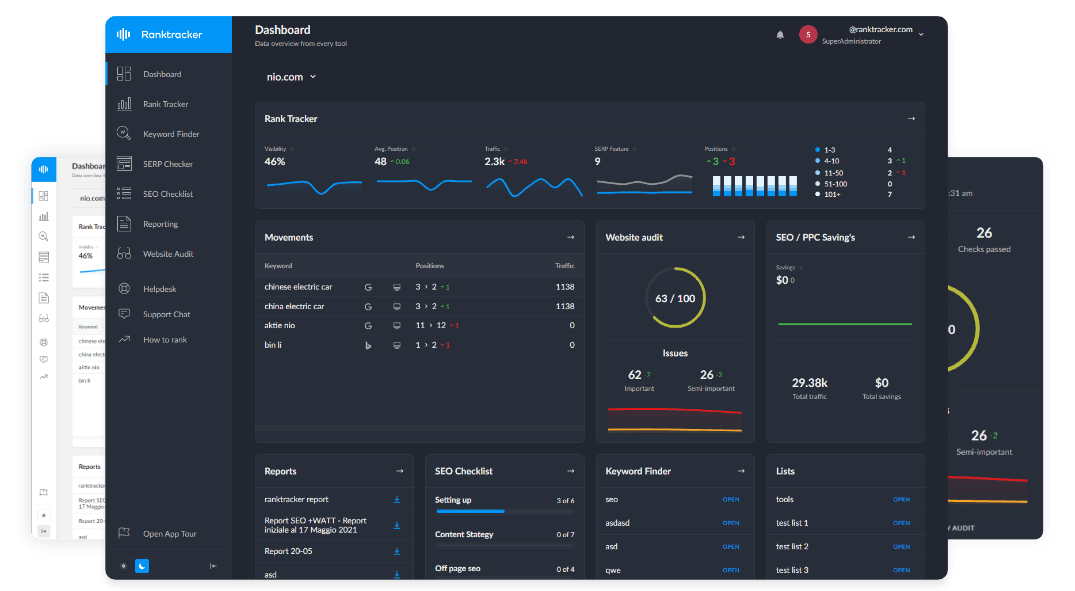Intro
When getting started with a new website or blog, it’s easy to get carried away trying to improve the SEO in any possible way, ending up just aiming your content at whoever is willing to visit your site. You might choose titles you think people will click without carefully considering if the title is well optimised for your ideal audience. You think to yourself that you’ve got to take what you can get. But that thinking could be problematic.
In fact, the wrong traffic can actually hurt your website in the long run. Defining and carefully targeting the right audience is a crucial part of your SEO strategy. Let’s talk about why quality traffic is so important and how you can make sure you get more of the right visitors.
Why It Matters

Before we start talking about how you can focus on quality, we want to quickly cover why it's so important that you target the right audience and how the wrong visitors aren’t necessarily better than none, and can even be a bad thing.
Google and other search engines don’t just look at content, metadata, domain authority, and titles anymore. They also consider user behaviour.
Here’s how it works.
Let’s say you’re looking for a casino that doesn’t limit your deposits and withdrawals. You search for a related term, such as “casinos without limits”. You click on one of the results; let’s call it Website #1. Once the page loads, you discover Website #1 is actually a site listing casinos with free spins, not casinos without limits. You quickly click away, returning to the page of search results. You then click instead on the search result for Website #2. Website #2 is a comprehensive list of and an informational guide to casinos that do not limit you, so you stay, read on, and eventually pick one of the options.
The All-in-One Platform for Effective SEO
Behind every successful business is a strong SEO campaign. But with countless optimization tools and techniques out there to choose from, it can be hard to know where to start. Well, fear no more, cause I've got just the thing to help. Presenting the Ranktracker all-in-one platform for effective SEO
We have finally opened registration to Ranktracker absolutely free!
Create a free accountOr Sign in using your credentials
Your search engine will likely have tracked your behaviour throughout the whole session. It’s noticed how you first clicked on Website #1, but then quickly clicked away and chose another result. It then took this as a signal that Website #1 wasn’t helpful, and thus should be ranked lower or not shown next time, while Website #2 seemed to give you what you were looking for and deserves a boost in ranking.
Tracking may differ a bit from search engine to search engine, but Google is believed by many experts to track the following:
- Click-through rate – whether the user clicked on a search result that showed up.
- **Bounce rate **– whether a user instantly leaves the web page without clicking through on any links or interacting with it.
- Session duration – how long the user stayed on the page.
- Pogo-Sticking – whether the user quickly returns to the search result page and clicks on another link.
Although Google doesn’t reveal the exact algorithm for ranking, these are some of the important factors to consider for those who are serious about SEO.
Strategies for Getting Quality Traffic
To get the right traffic, the first step is figuring out your audience. Then you’ll want to create the kind of content that this person needs, and that is related to the service or product that you’re selling.
Let’s use another example. You run a business selling waterproof matches. Your target audience will likely be campers, hikers, and wilderness enthusiasts. This is the type of person who, when they come across your product or service, may actually want to buy it.
Your goal is then to answer the questions that this type of person needs the answer to, and which can also be tied to your product.
For instance, you might write a comprehensive guide on how to start a fire, which will include a section about making a fire when it’s raining – the perfect time to plug your product. But what’s really important is that your focus is first and foremost on matching the search intent, meeting the visitor’s expectations, and providing them with all the answers they need.
Not all visitors will be interested in or buy your product, but if those who are not still stick around to read your content and are satisfied, it’s nonetheless a win for you, as search engines will take it as a sign that your content is relevant and push it higher up on the page of search results.
The All-in-One Platform for Effective SEO
Behind every successful business is a strong SEO campaign. But with countless optimization tools and techniques out there to choose from, it can be hard to know where to start. Well, fear no more, cause I've got just the thing to help. Presenting the Ranktracker all-in-one platform for effective SEO
We have finally opened registration to Ranktracker absolutely free!
Create a free accountOr Sign in using your credentials
While there are other methods of getting quality traffic, this is the most effective one because you’re targeting the right audience right when they want to be targeted.
Suggestions for helpful products won’t be intrusive when they’re already on the lookout for information and products to help them accomplish their goals. You’re not pushing your content into their face; they came looking for it and are therefore much more likely to be receptive.
Common Pitfalls to Avoid
If your site has a high bounce rate – that is, a user clicks on your result but then clicks away once arriving at the website – something is wrong. One possible reason is that visitors aren’t finding what they expect on the website. Does the content live up to the promise of the title? If not, it’s best to either change the content or the title.
Besides misleading titles and incomplete or low-quality content, there are a few other things that cause visitors to bounce from your website and look elsewhere. Among these are:
- A slow or unresponsive webpage.
- Compatibility and accessibility issues.
- The content lacks structure.
- Confusing layout and navigation.
- Intrusive pop-ups or ads.
These issues are fixable and well worth fixing. You may hire a designer or ask for feedback from others to ensure the layout is clear to others, create a dedicated mobile version of your website, delay any pop-ups until a visitor is hooked, and add structure to the content by organising it through sections, visuals, appropriate headings, and lists or tables when that makes sense. You can also read about how to speed up your website.
Final Thoughts
Getting quality traffic is all that SEO is really about. It doesn’t matter how many people see your website if none of them are interested. At the same time, it doesn’t matter how good or helpful your content is if the right audience doesn’t find it. That’s why the optimal organic SEO strategy is simply centred on helping your target audience find your website while always satisfying their intent.
It might take a while, but if you manage to meet visitors' expectations consistently, Google and other search engines will soon reward you with a high ranking on the keywords that matter.

